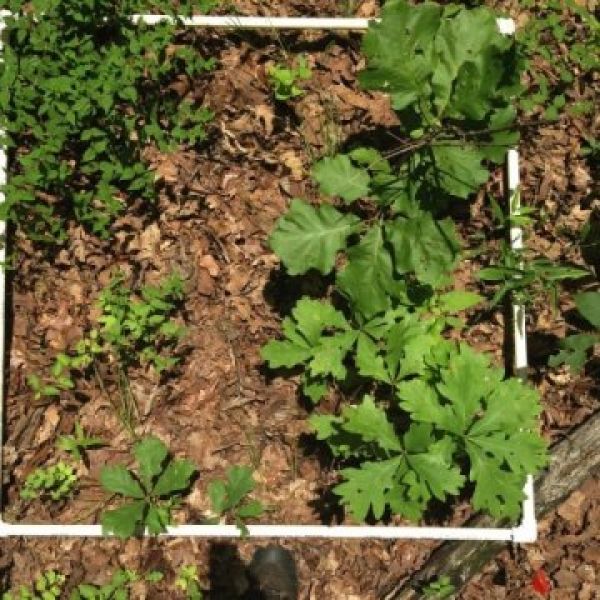Forests in the eastern United States may have had it easy compared to their western counterparts, with the intense, prolonged droughts and wildfires that have become typical out west in recent years. But as the climate changes over time, eastern forests are also likely to experience longer droughts. And although wildfires are comparatively rare, prescriptive fires are increasingly used in the east. How will these forests fare in the future? A new study from the University of Illinois provides answers.
The research, published in Functional Ecology, focused on the combined effects of fire and drought on white oak seedlings – a drought-tolerant species – in Shawnee National Forest in southern Illinois. The ability of young trees to withstand both stressors could predict the fate of the forests in a changing climate.
“It’s important to ask how fire will affect forests under warmer and drier conditions. Will forests subjected to fire function differently? Will they transition to something that looks more like a savannah or a woodland because fewer young trees establish and survive? In western forests, some tree species are failing to regenerate following fire. Our research provides insights into why that could happen,” says Jennifer Fraterrigo, associate professor in the Department of Natural Resources and Environmental Sciences at U of I, and the study’s co-author.
Lead author Tyler Refsland, a doctoral student in Fraterrigo’s laboratory, compared natural and planted white oak seedlings that were either resprouting from a recent prescribed fire (or simulated fire, in the case of the planted seedlings) or were unscathed. For each set of plants, he either imposed a drought by suspending a clear tarp over the seedlings or allowed natural precipitation to fall to the ground.
Read more at University of Illinois College of Agricultural, Consumer and Environmental Sciences
Image: A University of Illinois study has shown that fire exacerbates drought-driven declines in eastern forests, suggesting new management tactics may be necessary in a changing climate. (Credit: Tyler Refsland, University of Illinois)


